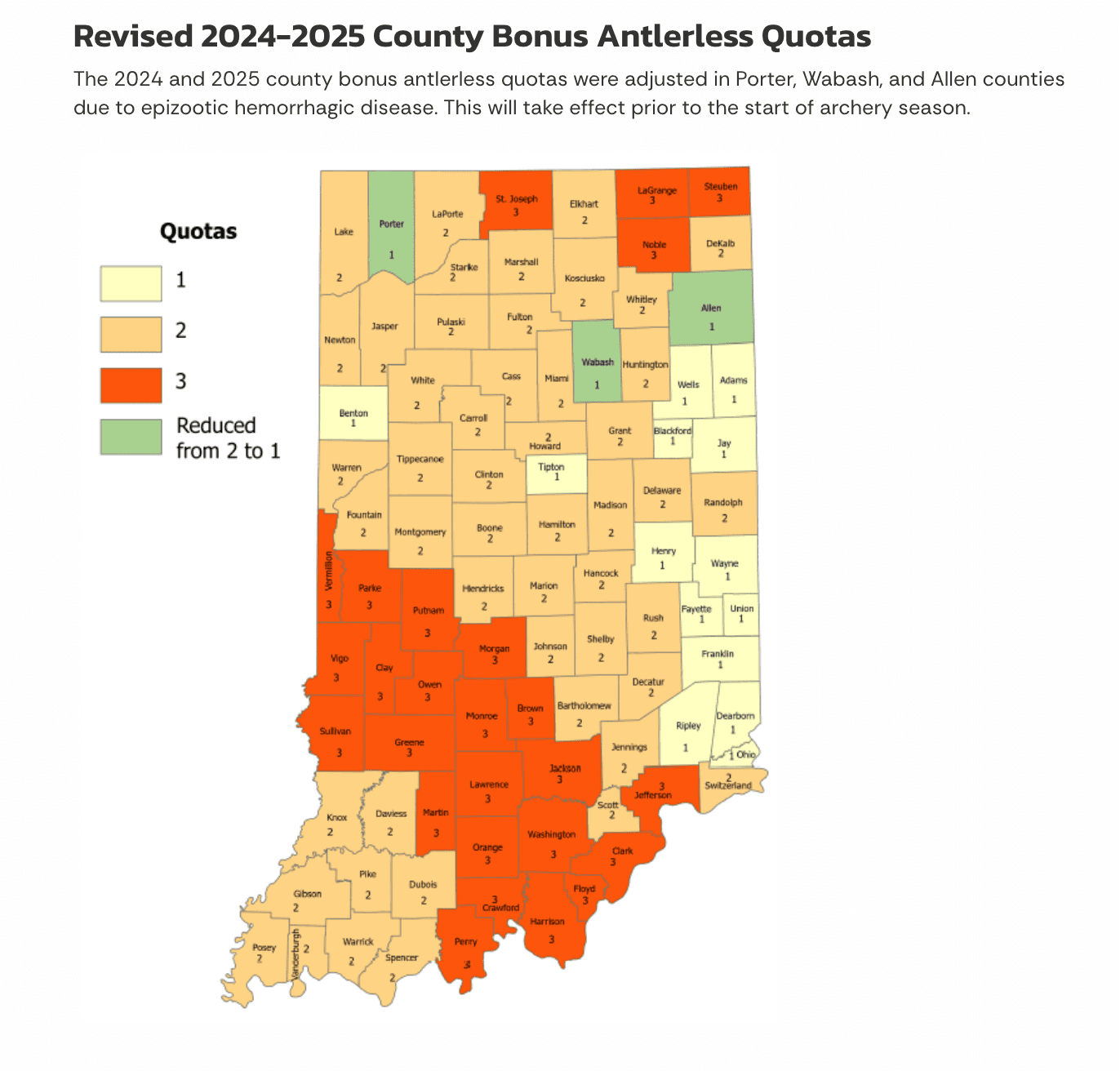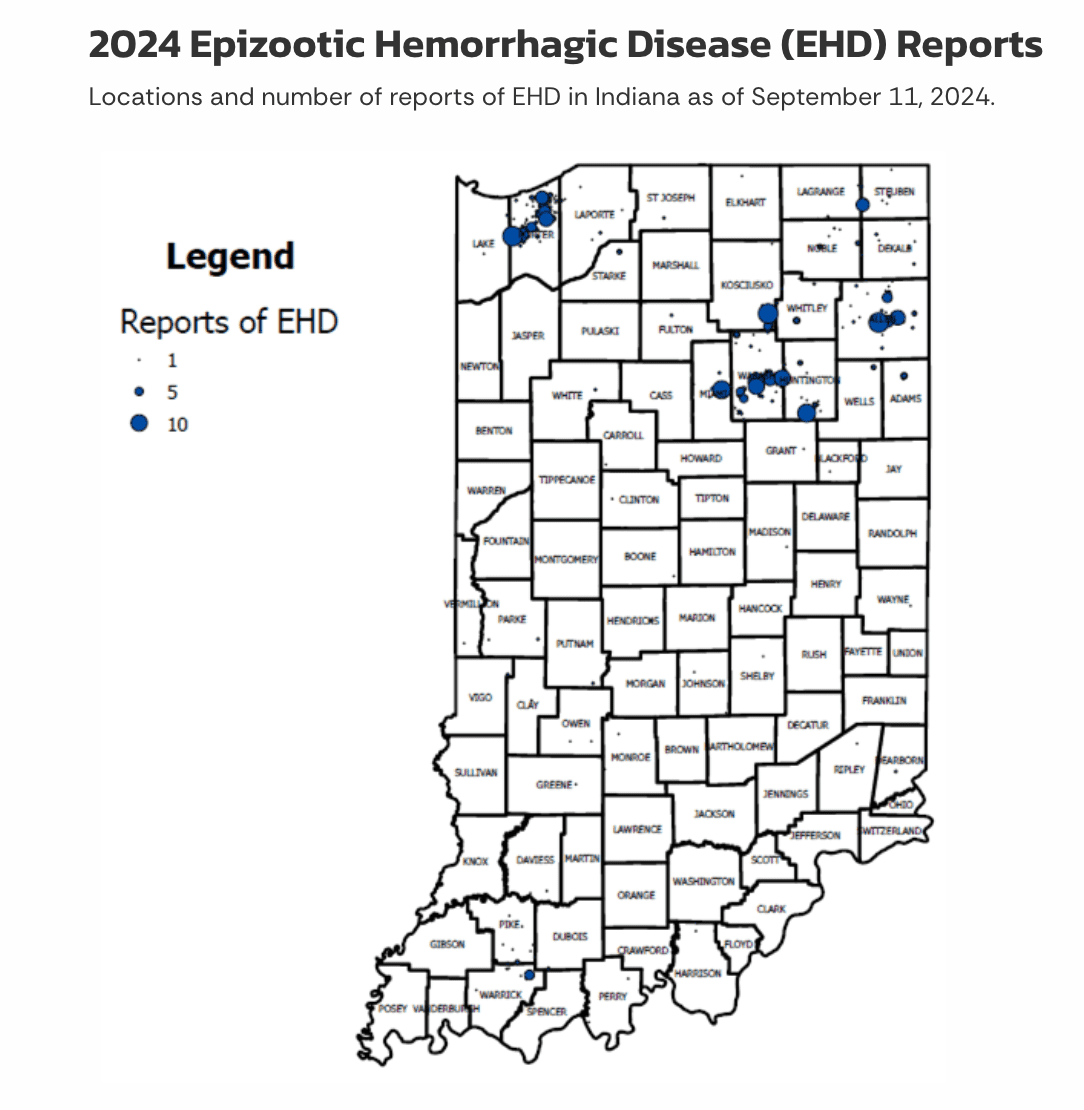The Indiana Department of Natural Resources (DNR) is reducing the County Bonus Antlerless Quotas (CBAQ) in Wabash, Porter, and Allen counties from two bonus antlerless deer to one bonus antlerless deer for the coming deer hunting season. This change is a result of the impact of epizootic hemorrhagic disease (EHD) on the deer herd in northern Indiana this year.
Changes to the CBAQ will not affect the Deer Reduction Zones.
Humans are not at risk for contracting EHD.
EHD is a viral disease that commonly affects white-tailed deer and is transmitted by biting midges, also known as sand gnats or “no-see-ums.” Cases typically occur during late summer and early fall, and there is evidence that outbreaks can be more severe in years in which there is a wet spring followed by a hot, dry fall. EHD is often fatal to deer, but some can recover and develop immunity.
Deer infected with EHD may display unusual behaviors such as lethargy, excessive salivation, or disorientation. EHD also causes fever in deer, which can cause them to seek water. As a result, many deer that die from EHD are found in or near open water sources like ponds and rivers.
Anyone who finds a deer that is showing signs of EHD or dead in water is asked to report it at on.IN.gov/sickwildlife.
DNR monitors for EHD annually; however, severe outbreaks don’t occur every year. The severity of EHD in a single year depends on a variety of factors including climate, immunity, and other ecological factors.
The effects of the deer harvest and EHD will be evaluated after the deer hunting season, and additional changes will be made for the 2025 hunting season, if necessary. EHD detections can be continually monitored at on.IN.gov/EHD.
Not every deer in an affected area will contract EHD. One sign a deer has recovered from EHD is sloughing or breaking on their hooves. DNR asks that successful hunters use the Deer After Hunt Survey to report the condition of their deer’s hooves, including both normal hooves and hooves that show evidence of sloughing or damage.


